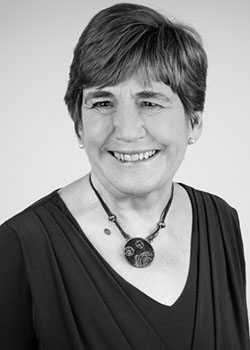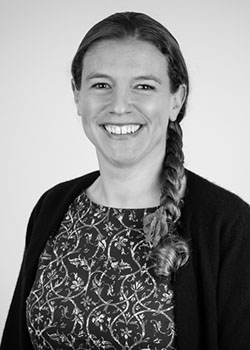The brief: Mary, Dave, and Tom
Mary (62), a retired teacher, and Dave (63), a retired town planner, are a couple who are long-standing friends of Diane. They had been her clients before, but had moved to another adviser who dealt with the teachers at Mary’s school. Retirement, which represented a new phase of their lives, prompted them to approach Ashlea Financial Planning in 2013.
Mary’s retirement had led to a reassessment of her investments, and a need to ensure that she and Dave would have sufficient funds to enable them to live the retirement that they had planned.
They had four objectives:
-
To travel to various parts of the world.
- To maintain their lifestyle, which included living in their French house in the summer and in the family home in the UK in winter.
- To have sufficient funds to provide occasional gifts to their children to help them on their way and to mitigate inheritance tax.
- To have peace of mind that their financial affairs are in order.
Their son Tom was also a client. They had suggested he speak to Ashlea Financial Planning in 2006, after he received an inheritance from his great aunt. A portfolio of investments had been arranged for him, which was the start of his journey with the firm (see further down for his story).
Mary and Dave's financial plan, by Diane Weitz
Diane Weitz CFP™ Chartered MCSI

Diane started Ashlea
Financial Planning in 2005, and the team now consists of eight people.
The company won the David
Norton award in 2017 and
achieved Chartered and Accredited status
in the summer of 2018.
Diane spent many years as chair of the
Cotswolds branch of the Institute of Financial
Planning and a year as president of the
Cotswolds branch of the CISI. She has
resigned as president but still plays a role
on the Committee.
Ashlea moved to a new office in central
Cheltenham at the beginning of August 2019.
The couple had a house in Cheltenham and a holiday home in France. Mary and her sister had two houses in Cornwall, given to them by their father. Dave’s mother had died a few years previously and her estate had been distributed between her two sons. Mary’s mother had also passed away, leaving some inheritance, including her house, which was eventually sold.
Their existing investments consisted of a variety of structured products with different end dates, one of which was paying them an income of 6.3%. There were some multi-asset portfolios with some ISAs held on the Skandia platform (now known as Old Mutual Wealth), and a Standard Life Insurance Bond. They both had self-invested personal pension (SIPP) investments to supplement their defined benefit pensions. These were held on different platforms.
We decided to consolidate the investments where possible onto the Transact platform. At that time Skandia did not facilitate in specie transfer, so cash was transferred. This enabled us to build an investment strategy in line with their attitude to risk.
The SIPPs both held Investec Kick-Out structured products which were due to pay out within a month. These were left in their existing platforms until the bonds paid out, when they were also transferred to the Transact platform.
The Investec structured product was left to run its course, and when it matured, the proceeds were transferred to the Transact account, with income being generated from the ISA accounts to replace that from the structured product.
The Standard Life Insurance Bond, which was paying out 5% deferred tax income each year, was left in place.
The resultMary and Dave now have a much clearer picture of their net worth, which has given them peace of mind that their funds will be available when they need them. They are not drawing down from their SIPPs at present. They both have good index-linked defined benefit schemes, and are now drawing their state pensions.
The financial plan has enabled them to plan to give £50,000 to each of their children over the next few years as they need it. Tom had already received his to help him renovate his first house.
Tom's financial plan, by Diane Weitz and Eleanor Clark
Eleanor Clark

Eleanor joined Ashlea
Financial Planning in October
2016. She has completed her
full apprenticeship and gained
a distinction. She is now fully
qualified to level 4 and looking
forward to moving into a full
adviser role.
Eleanor is passionate about educating the
young about financial planning and has
devised a workshop for years 5 and 6 in
primary schools. This has been presented
successfully to two local schools and there are
plans to extend it to others.
Tom met us for an initial meeting in 2006, to discuss how to deal with his inheritance money. He had decided to use the money to purchase a flat.
We invested the remaining funds using the Transact platform, with a strategy set for long-term investment. Tom later studied to become a chef, landing a job on a private yacht. He had few expenses, a high net income, and another source of income from renting out his flat. He was in the fortunate position of being a ‘Seafarer’ in the eyes of HMRC, meaning he could claim for the Seafarers’ Earnings Deduction (SED).
He kept his Transact account open with us and regularly deposited amounts of surplus income, utilising his ISA allowance. This was invested and as a result his Transact portfolio has seen healthy growth over time.
At one of our meetings, we discussed that he had not yet begun contributing to any pension. We put Tom onto our cashflow software, Truth, to model the benefits of
beginning pension contributions. The SED meant that he could contribute a maximum of £3,600 annually to a pension. We discussed the possibility of using a LISA as a retirement plan as well as a personal pension. Tom agreed, so we set this up and he began contributing.
Before one of his annual review meetings, we asked Tom to think about the three
George Kinder questions. The resulting goals were:
-
Buy a property in town.
- Put enough money into savings to live for a year while settling in to the new property.
- Start and develop a small business involving design and lifestyle products as well as hosting events.
- Start a family.
- Continue to build up a fund for retirement, recognising that the above goals may take priority for a short time.
We explored these goals at the meeting. He was keen to sell the flat and buy a house but was concerned by how to fund this. After the meeting we updated his Truth cashflow and provided him with a cashflow report detailing each scenario.
Each scenario considered him leaving his current employment and finding work more locally. We planned holistically, looking at his tax situation, investments and pension savings, including his state pension.
Tom had nine full years on record in his state pension forecast. As he is likely to be self-employed when he returns full time, we recommended that he should register to pay the self-employed contributions to enable him to start accumulating accredited years. He has plenty of time to accrue the 35 years’ contributions necessary to be eligible for the full flat rate pension.
The resultTom had the reassurance that he could afford a house and change his job using only a small amount of savings. He found a suitable house and was able to obtain the mortgage and purchase the property. We haven’t yet discussed his long-term idea of setting up a local business, but we have every confidence that he will return to us when he is ready to explore this idea further.
This article was originally published in the October 2019 print edition of The Review. The print edition is available to all members who opt in to receive it, except student members. All eligible members who would like to receive future editions in the post should log in to MyCISI, click on My Account/Communications and set their preference to 'Yes'.